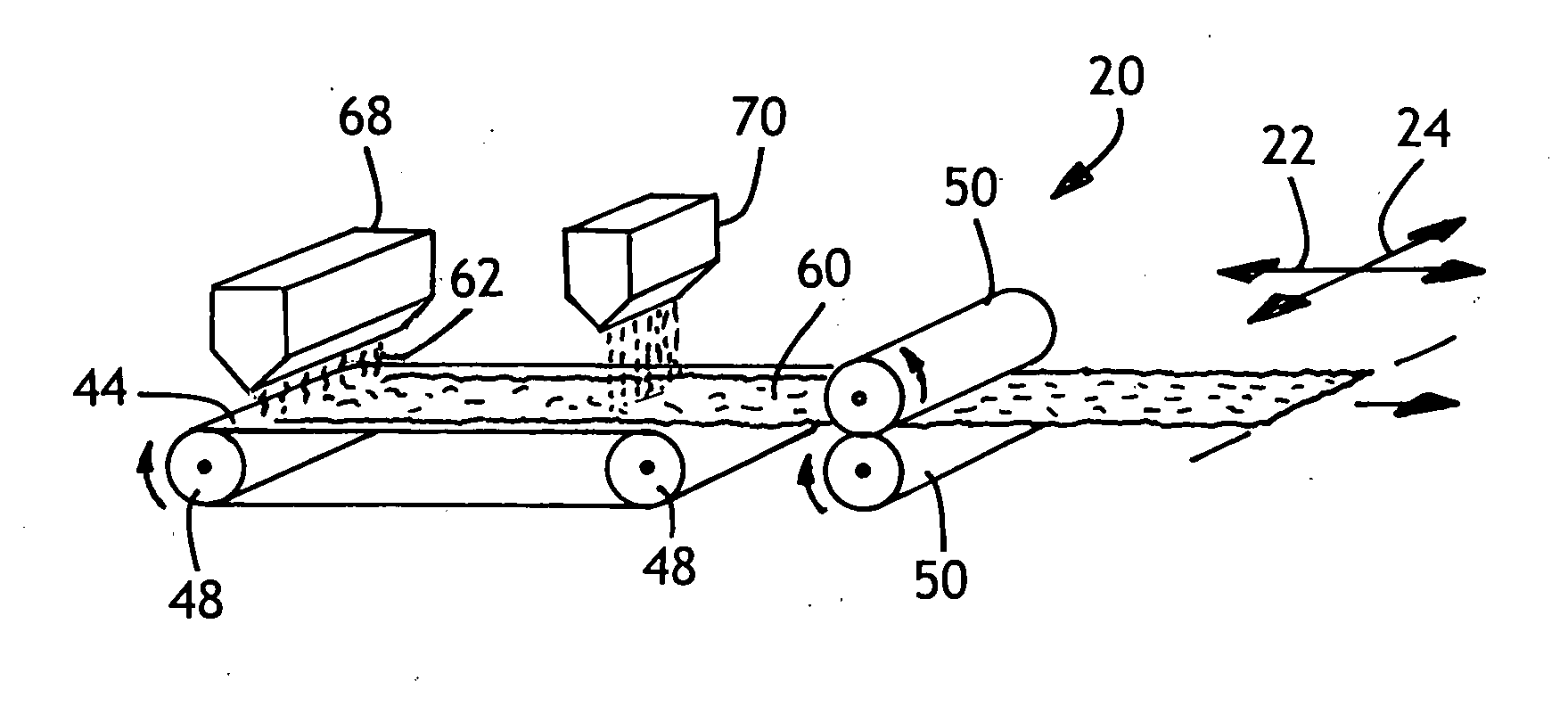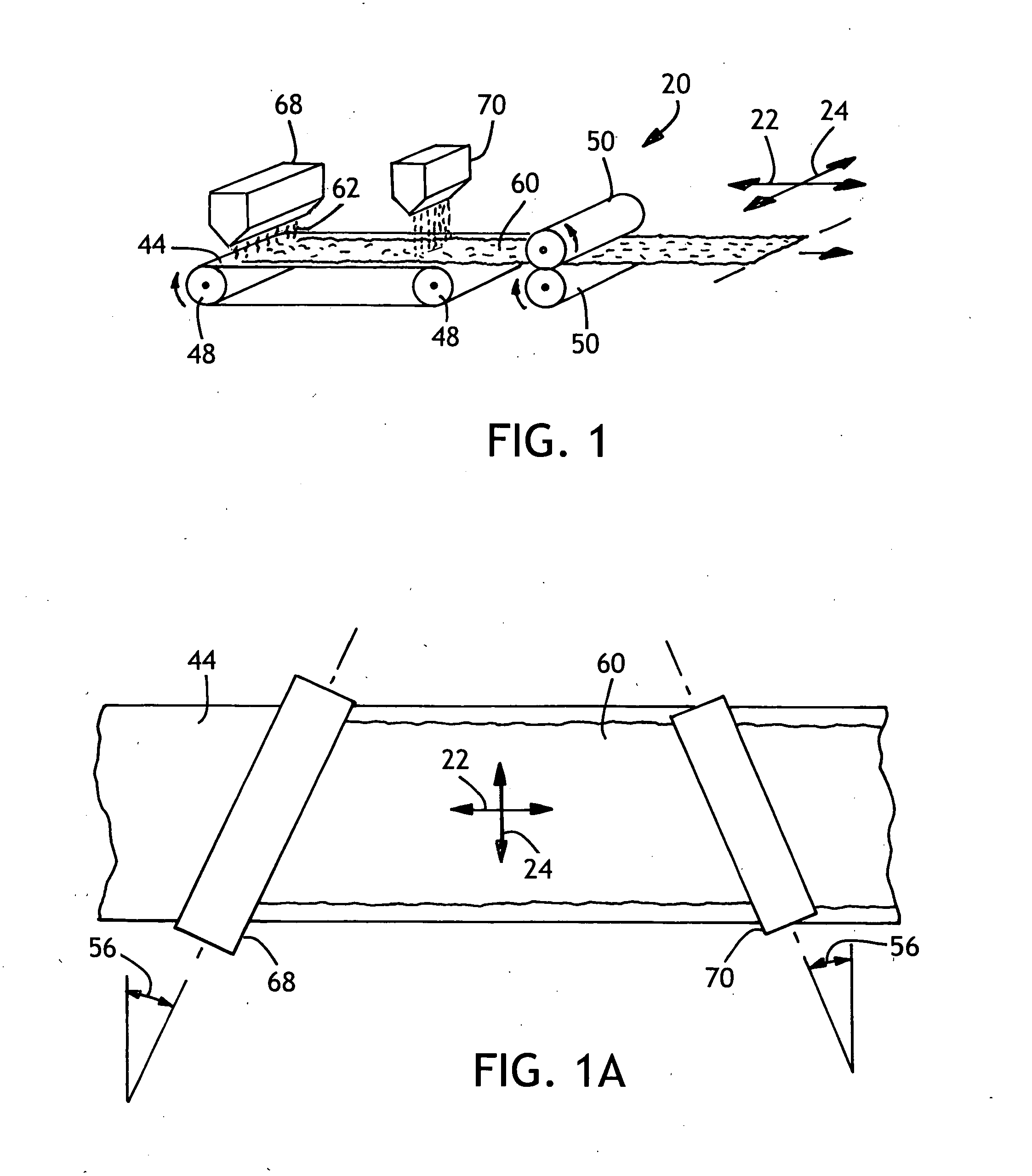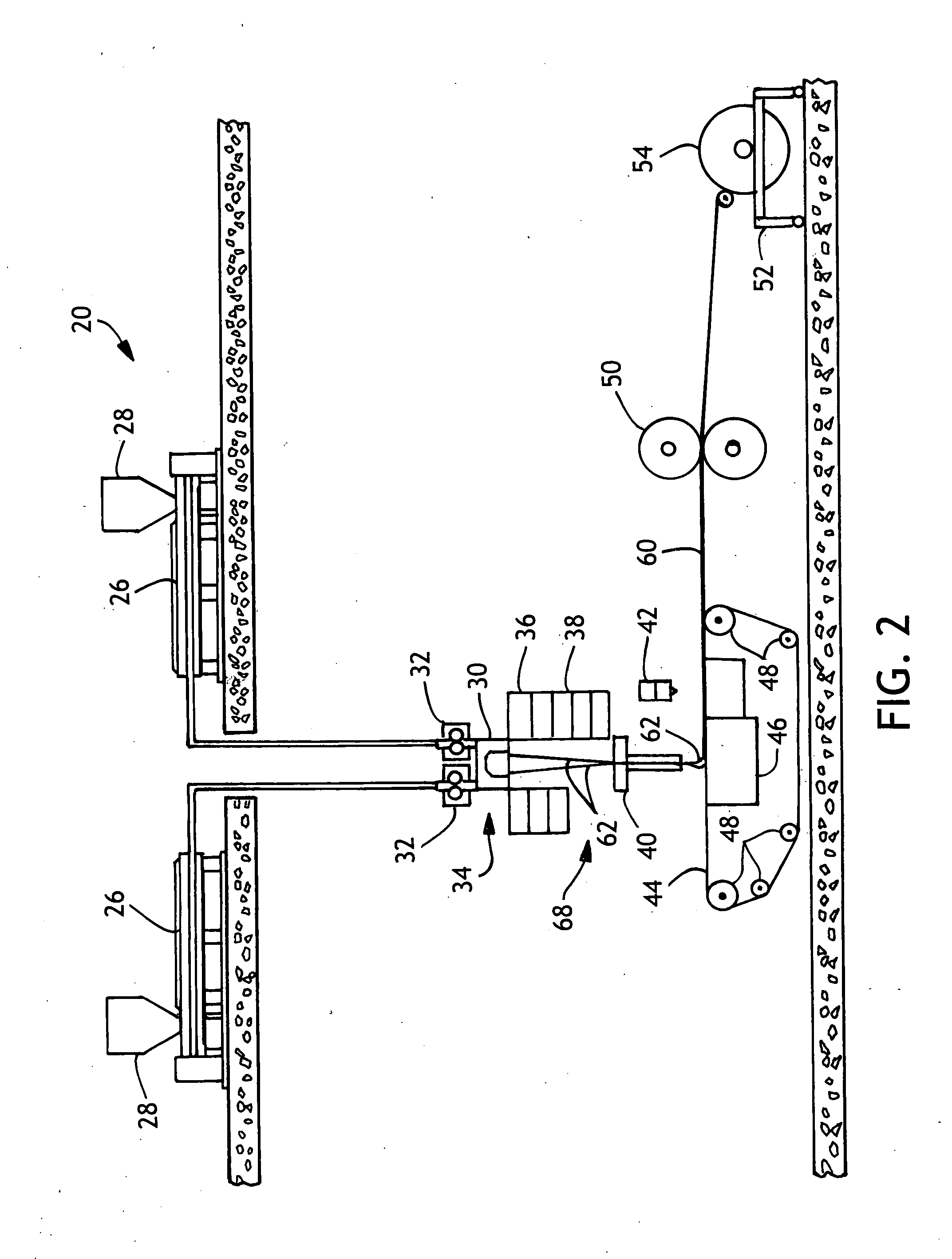Method of making fibers and nonwovens with improved properties
a technology of nonwoven fabrics and fibers, applied in the field of fibers and nonwoven fabric webs, can solve the problems of poor dimensional stability complicated formation processes, and significant challenges in the processing of particular types of fibers and particular types of nonwoven fabrics using conventional fiber spinning technology, and achieve low fiber draw down ratio, low crystallization rate, and low fiber draw down speed
- Summary
- Abstract
- Description
- Claims
- Application Information
AI Technical Summary
Benefits of technology
Problems solved by technology
Method used
Image
Examples
example 1
[0165] PLA nonwovens were obtained by setting the cold-quench air temperature at 53° F. (about 12° C.) and varying the FDU pressures from 3, 4, 5, 6, 8 and 10 psi (21, 28, 35, 42, 56 and 70 KPa, respectively). Pressures above 10 psi (70 KPa) generated excessive fiber breaks and process instability. Samples of fiber were collected before the hot air knife, and related data are set forth in Table 1 of FIG. 3. The data in Table 1 were generated employing the following conditions: [0166] HILLS spin pack, 50 hpi (holes per inch), 0.6 mm hole diameter, 14 inch wide pack; [0167] 60 inch (152 cm) quench zone; [0168] spin pack temperature=430° F. (about 225° C.); [0169] throughput=0.55 ghm (grams per hole per minute); [0170] hot air knife (pre-bond)=250° F. (about 120° C.).
[0171] Data pertaining to the effect of quench temperature on crystallinity and size (microns, μm) of the PLA fibers are shown in FIG. 10. Data pertaining to the effect of cold-quench and cold-draw temperature on the crys...
example 2
[0172] PLA nonwovens were obtained by setting the anneal-quench air temperature at 212° F. (100° C.) and varying the FDU pressures from 3, 4, 5, 6, 8, 10 and 11.5 psi (21, 28, 35, 42, 56, 70 and 80 KPa, respectively). Samples of fiber were collected before the HAK, and related data are shown in Table 2 of FIG. 4. The data in Table 2 were generated employing the same conditions as in Example 1. Data pertaining to the effect of quench temperature on crystallinity and size (micrometer) of the PLA fibers are shown in FIG. 10. Data regarding the effect of anneal-quench and heated draw temperature on the crystallinity and size (micrometer) of the PLA fibers are shown in FIG. 12. It can be seen that the heated anneal-quench and the heated-draw resulted in a higher degree of crystallinity at a given draw pressure.
example 3
[0173] PLA nonwovens were obtained by setting the anneal-quench air temperature at 212° F. (about 100° C.) and varying the FDU pressures from 6, 8, 10 and 11.5 psi (42, 56, 70 and 80 KPa, respectively). Samples of nonwoven spunbond were collected by running the bonder at 308-310° F. (about 153-155° C.) at a speed of around 300 feet per minute (92 m / min). Bonded nonwoven samples were thus obtained and evaluated for tensile and fluid handling properties. Samples produced at or below a 6 psi (42 KPa) FDU pressure became heavily shrunk upon bonding, and had a distinct rough feel. Materials produced with FDU pressures above 6 psi (42 KPa) exhibited a progressively smoother feel, with less shrinkage. BIOMER L9000 resin was processed at 430° F. (about 225° C.) and 0.55 ghm. A polypropylene control material, manufactured at the same facility at a 450° F. (about 232° C.) process temperature and a 0.5 ghm throughput is also reported. Data pertaining to this example are shown in Table 3 of FIG...
PUM
| Property | Measurement | Unit |
|---|---|---|
| crystallization half-time | aaaaa | aaaaa |
| temperature | aaaaa | aaaaa |
| surface speed | aaaaa | aaaaa |
Abstract
Description
Claims
Application Information
 Login to View More
Login to View More - R&D
- Intellectual Property
- Life Sciences
- Materials
- Tech Scout
- Unparalleled Data Quality
- Higher Quality Content
- 60% Fewer Hallucinations
Browse by: Latest US Patents, China's latest patents, Technical Efficacy Thesaurus, Application Domain, Technology Topic, Popular Technical Reports.
© 2025 PatSnap. All rights reserved.Legal|Privacy policy|Modern Slavery Act Transparency Statement|Sitemap|About US| Contact US: help@patsnap.com



